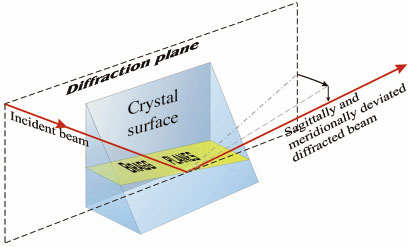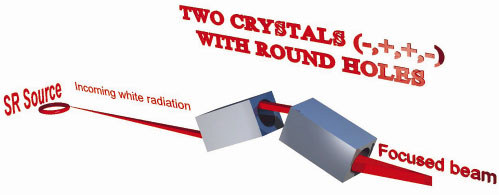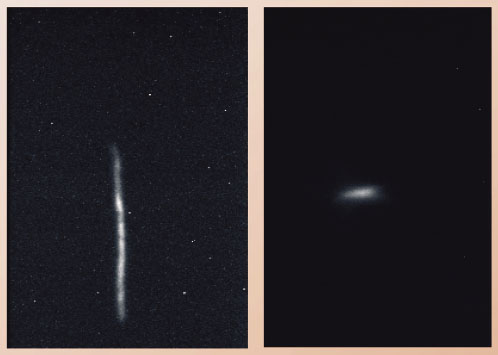- Home
- Users & Science
- Scientific Documentation
- ESRF Highlights
- ESRF Highlights 2001
- Methods and Instrumentation
- Diffractive-refractive Optics: A New X-ray Focusing Monochromator
Diffractive-refractive Optics: A New X-ray Focusing Monochromator
By diffractive-refractive optics we mean crystal devices that utilise refraction phenomena occurring during X-ray diffraction to focus or collimate a diffracted beam.
When a beam is transmitted through a prism it is deviated from the direction of the impinging beam. The deviation of the beam changes with the change of the angle between the faces of the prism. In diffractive-refractive optics we do basically the same with a Bragg-diffracted beam. If the surface of a crystal is parallel to the diffracting planes, the incident and diffracted beams form equal angles with diffracting planes and in this sense the crystal behaves like a mirror. If, however, the surface is inclined with respect to the diffracting planes, the diffracted beam is deviated from the "mirror-like" reflection and this deviation depends on the size and the orientation of the inclination. Figure 166 shows the general case of the inclination, representing the general asymmetric case of diffraction. According to theory, the diffracted beam is deviated by refraction, both in the meridional and in the sagittal directions. The deviations are very small, but sufficient to influence narrow and long synchrotron X-ray beams.
 |
Fig. 166: Deviation of diffracted beam in the general case of asymmetric Bragg diffraction. |
We can exploit this effect to focus or collimate beams by machining the diffracting surface into a suitable shape [1,2]. For example, a sagittally focusing monochromator designed for synchrotron radiation consists of four grooved crystals forming a so-called (-,+,+,-) dispersive arrangement. The grooves should have a parabolic profile and should be cut in the longitudinal direction. Each groove contributes to focusing: the so-called dispersive configuration cancels the smearing of the focus, which is caused by the wavelength dispersion. It also eliminates the depth aberration that would broaden the beam in the vertical direction after double reflection.
 |
Fig. 167: Sagittally focusing four-bounce crystal monochromator. |
A simplified version of this kind of monochromator was built consisting of a crystal pair with longitudinal holes (Figure 167). The X-rays are diffracted twice inside each channel-cut hole. In this case, the parabolic shape of the diffracting surface is replaced by a circular one, which does create a small aberration. Fortunately, this drawback is compensated by the simplicity of the device. We have clearly demonstrated at both the ESRF and the APS that this scheme works even for a long focusing distance of 20 m. Figure 168a shows the image of an 8 keV X-ray beam diffracted by the sagittally focusing monochromator using Si(111) crystals with an index of asymmetry of 18.2 and a hole diameter of 4.5 mm. The image was taken close to the monochromator, and the beam size was 3.2 mm. Figure 168b shows the focus at the focusing distance of 2 m. The size of the focus was 140 micrometres.
 |
Fig. 168: a) Image of a beam recorded close to the exit of the focusing monochromator; b) Image of the same beam recorded at the focusing distance of 2 m after the monochromator. |
Our experiments show that with this method it is possible to reach a focal width of several hundreds of micrometres without any special treatment of the diffracting surface. These focusing monochromators are simple and compact, their focusing distance remains practically constant within a certain energy range. Due to the dispersive four-bounce configuration, they also keep the position of the exit beam fixed.
References
[1] J. Hrdy, J. Synchrotron Rad., 5, 1206 (1998).
[2] J. Hrdy and J. Hrdá, J. Synchrotron Rad., 7, 78 (2000).
Principal Publications and Authors
J. Hrdy (a), N. Artemiev (a), A. Freund (b) and J. Quintana (c), Proc. SPIE 4501, 88-98 (2001).
(a) Institute of Physics ASCR (Czech Republic)
(b) ESRF
(c) APS (USA)



